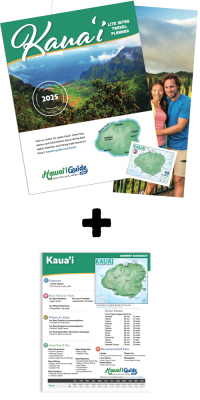05-17-2023
Koloa Town
Located within the South Region on Kauai
This article may contain affiliate links. We earn a small commission at no extra cost to you. Mahalo!
The history of Hawaii has touch points across the globe, yet there is no place quite like it. Many inquisitive visitors find themselves ambling around its unique infrastructure and historical landmarks, wondering how far back it goes and what there is to find the further back in time one travels.
Of course, the Hawaiian Islands have been populated for nearly 2,000 years. The wealth of culture born out of this extensive time period is still thriving on the islands today. Visitors would have to stay inside their hotel rooms 24 hours a day not to see it (don’t do that).
However, when it comes to post-colonial history, a new chapter opens up, along with another layer of local landmarks to visit and learn from. Perhaps the most foundational of these is Old Koloa Town in the south of Kauai.
Koloa is the first place in Hawaii where a thriving sugarcane plantation was set up. This happened in 1835 when slavery was legal in the United States, Hawaii was more than 100 years away from being part of the United States, and King Kamehameha III ruled the kingdom. Needless to say, it was a wildly different time, with different rules and expectations.
This one location on Kauai set the course for Hawaiian history until 2016, when Hawaii’s last sugar mill sent off its last-ever shipment from the shores of Maui. Following the success of Ladd & Company’s Koloa mill and the springing up of Koloa Town around it, sugar became the economic backbone of the islands for the better part of two centuries.
Today Hawaiian culture is a beautiful conglomeration of Polynesian and Japanese, Portuguese, Chinese, and other influences. This can largely be attributed to the sugarcane plantations that followed the one in Koloa. This sugary period was in many ways quite brutal - a handful of wealthy corporations controlled all the mills and many other staples of the Hawaiian economy virtually as well, predictably resulting in lousy wages, exhausting hours and working conditions, and a generally poor quality of life for working-class island residents. However, those residents came from around the globe, bringing recipes, traditions, and perspectives that all met each other on the fields.
Whether you love Poke or the sound of a slack key guitar, by visiting Koloa, you are visiting the beginning of it all. Hawaiian culture coalesced into its modern form, starting with this small Kauai village a few minutes north of Poipu.
The first thing you’ll see on the journey to Koloa that will signify your imminent arrival is a marvelous canopy of eucalyptus trees forming a kind of natural tunnel over Maluhia Road. Upon emerging from this fittingly transitional checkpoint, you’ll find yourself in a quaint mix of old and new.
Old Koloa Town in the 21st century is equipped with a lovely afternoon’s worth of shops and restaurants that are pretty modern.
For instance, a staple favorite is Koloa Pizza Kitchen - a delicious modern-day establishment serving something that hadn’t even reached New York City back when Koloa Town first sprang up. Koloa Pizza Kitchen is located in the Asahi Soda Building on Koloa Road, a tremendously historical site in and of itself. It was the site of the Akona family's taro processing factory before the turn of the 20th century (and therefore, once again before the advent of the dish now served there). It became a liquor store before Prohibition in Hawaii in 1918, then a soda fountain full of Leave It to Beaver characters, then a music store, a pool hall…you get the idea.
Another must-see spot in Old Koloa Town is Fish Eye Kauai Art Gallery. This visually stunning display of local work is movingly built inside what used to be a military building during WWII - a bakery. The historic Kahalewai Building has also been a tailor shop, a post office, and a watch repair shop, constructed nearly 100 years ago.
Grab Your Free 2025 Guides!
Kauai Intro Visitor Guide
+ Our Summary Guidesheet!
Includes the top must-see & do attractions, best times to visit, a monthly weather & visitor summary, and our tips on how to save when booking your car rental, tours, and activities. Plus, grab our free Kauai Summary Guidesheets. Check out our 2025 Kauai Visitor Guides.
Recommended Tours Nearby
Affiliate Disclosure: We may earn commissions from some travel partners (like Amazon or Expedia) which helps us maintain this site. These links are at no extra cost to you and don't impact our honest & unbiased recommendations. Remove all the ads →




